Learning a language from home has never been easier. From online tutors, self-guided textbooks to podcasts, here are 6 top language learning tips for keeping your language goals on track.
It’s never been easier to learn a language from home and keep your language learning goals on track. Why is it easier? We have more time at home and more language resources. Now is the time to strike while the iron is hot. Before 2019, we had to really prioritise how we spent our days and how to fit language learning around a full-time job. Now that many of us are working from home we’re no longer rushing around and feeling tired at the end of the day. If you’re feeling the opposite, check out my 3-step method for learning languages like crazy, even if you have a crazy life.
You’ve been given back a massive chunk of your precious commute time that you can now repurpose to work on forming new healthy habits and take advantage of the unexpected health benefits that come with learning languages. One of the many advantages of spending little to no time in your workplace is you have more energy and are better rested. These are perfect conditions for consuming and absorbing a foreign language. So take advantage of it!
I’ve used this extra time to inject even more language learning into my day and I’m already seeing an improvement. I’ve also become obsessed with this home workout app that I use every day. Using it has now become a habit and something I don’t need to worry about fitting into my day because it’s now a priority. It can be a challenge to keep fit whilst travelling, but I know that I can download these workouts and do them from anywhere.
By using this time to form a new language learning habit and making it a priority now, it will be easier to maintain it when things return to normal. And when they do, you’ll be ready! And you’ll be well and truly travel fluent for your next trip.

Need some more inspiration? Check out my curated list of beautiful language quotes.
So, keep calm, carry on and….learn a language! This guide outlines exactly how I’m keeping my own language learning goals on track and how you can learn a language from home.
Before we jump in, do you know what type of language learner you are? I recommend reading this guide to find out and then use that to decide which of these suggestions will work best for you.
Here are 6 ways to learn a language from home.
1. Get an online teacher
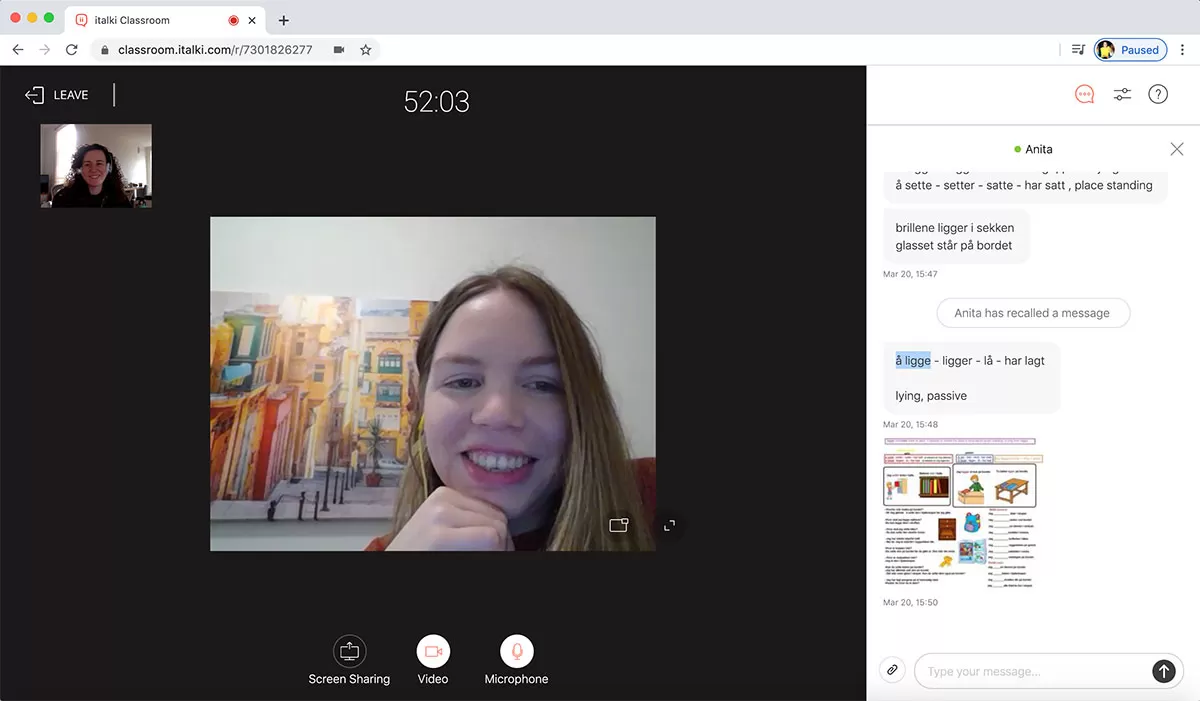 One of the language community’s secret weapons and one of the top language learning tips by polyglots is having regular lessons online. Polyglots and serious language learners the world over (myself included) all have one thing in common, we use italki. italki is an online language learning website that connects language learners and teachers through video chat. The site connects you with online teachers for 1-on-1 tutoring in over 100 languages.
One of the language community’s secret weapons and one of the top language learning tips by polyglots is having regular lessons online. Polyglots and serious language learners the world over (myself included) all have one thing in common, we use italki. italki is an online language learning website that connects language learners and teachers through video chat. The site connects you with online teachers for 1-on-1 tutoring in over 100 languages.
italki is hugely popular because you get results. As of July 2017, italki has more than 3 million users and 10,000 teachers teaching more than 100 languages, including endangered ones such as South African Xhosa. From Afrikaans to Zulu, no matter what your target language is, you’re sure to find a teacher on italki.
There are two different types of teachers on italki to choose from – Professional Teachers and Community Tutors.
- Professional teachers have training as educators and/or extensive professional teaching experience. They provide students with resources, prepared materials, and structured lesson plans to help you reach your goals.
- Community tutors may be recently qualified teachers or are just knowledgeable about the target language, and use their time to provide students with conversation practice.
How to use italki
Using italki is simple to use too. Here’s how to get started.
- Visit the italki website and enter the language you want to learn.
- Browse the list of available teachers. If you have a preference, filter the type of teacher you want, either a professional teacher or a community tutor
- Watch their welcome video, read their introductions, and compare prices
- Once you’re ready, click the ‘Book’ button.
- Choose to book a trail lesson. This is usually heavily discounted and lasts for 30 minutes.
- Choose a time and date
- Choose your preferred teaching platform (italki Classroom, Skype, or Hangouts).
- You’ll then be prompted to log in or register for a new account.
- Once you sign in, you can complete your booking.
- Look out for your email confirmation with details on how to join your lesson.
Want to know more? Read my full italki review here and sign up to italki here.
That’s it! Happy learning!
Special reader offer: Book your first italki lesson here and get $10 FREE of italki credits. That’s a free lesson!
2. Use a self-guided language textbook
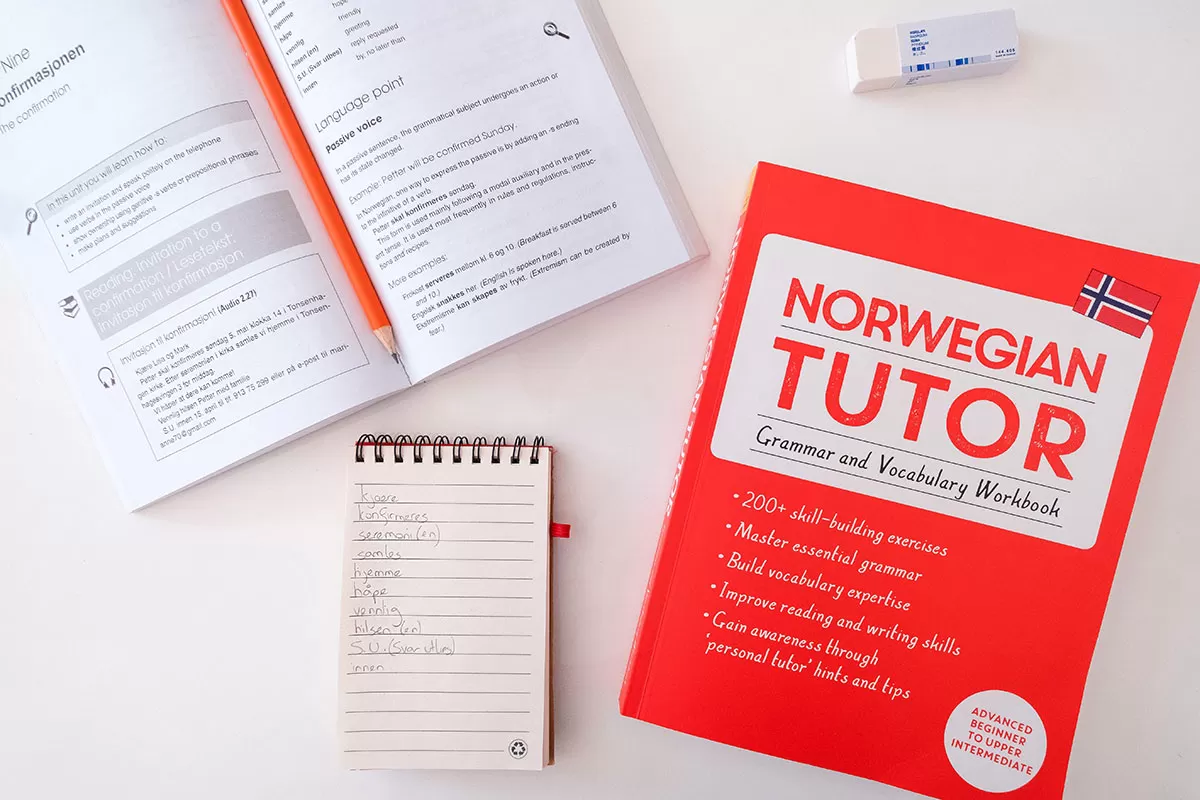 Jump online and pick yourself up a self-guided language textbook. This will keep you on track and ensure you learn the right vocabulary and grammar at the right time for your level. I use both the Teach Yourself and Colloquial series to learn Norwegian. These courses focus on reading, writing, speaking, and comprehension and are combined with audio which you can access and download online. They prepare you for the most common scenarios with vocabulary and expressions and engaging exercises.
Jump online and pick yourself up a self-guided language textbook. This will keep you on track and ensure you learn the right vocabulary and grammar at the right time for your level. I use both the Teach Yourself and Colloquial series to learn Norwegian. These courses focus on reading, writing, speaking, and comprehension and are combined with audio which you can access and download online. They prepare you for the most common scenarios with vocabulary and expressions and engaging exercises.
What’s also great about these courses is that you learn about the people and places where the language is spoken. Customs, traditions and other interesting tidbits of culturalism are weaved into exercises to give you a deeper understanding of the community’s culture. For example, in my Colloquial Norwegian book, I learned all about hyttetur (going on a hiking trip to a remote cabin) and how many Norwegian’s have their own hytte (cabin) in the mountains and spend weekends and holidays and any other chance they get there. It’s super Norwegian! Check out my guide to the 12 most common mistakes Norwegian students, plus my favourite Norwegian language resources.
Answers for the exercises are provided at the back of the book but if you’re uncertain about something or need more practice, share it with your italki teacher and spend some time working through it.
See all available languages by Teach Yourself here
See all available languages by Colloquial here
3. Read short stories
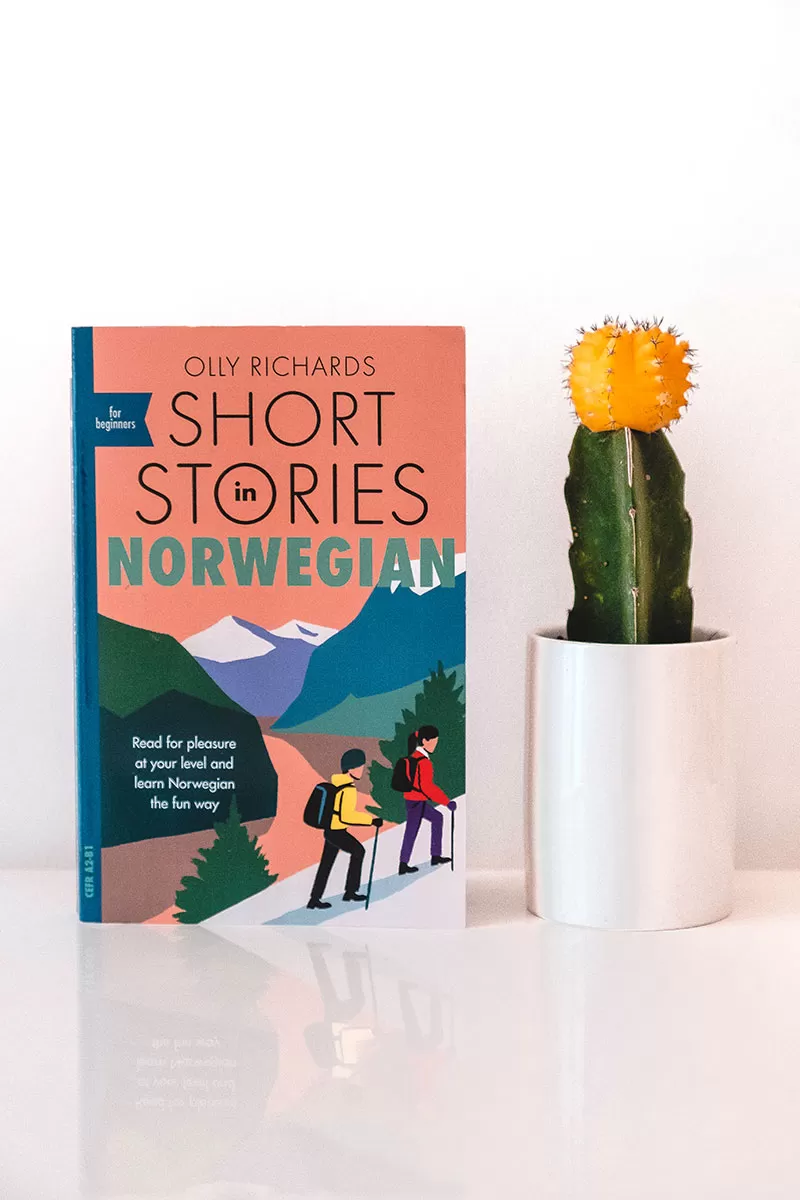 One of the challenges for language learners is finding reading material that is both interesting but not so complex that you need to constantly check a dictionary. There’s nothing worse than purchasing a book you’re excited about only to never finish reading it because “it’s too hard!”
One of the challenges for language learners is finding reading material that is both interesting but not so complex that you need to constantly check a dictionary. There’s nothing worse than purchasing a book you’re excited about only to never finish reading it because “it’s too hard!”
The solution? Short Stories by Olly Richards!
I love love LOVE this series, and I’m not the only one. The past two years that I spoke at The Language Show in London, these books were flying off the shelves. Due to popular demand, they’ve now expanded the series which now includes Arabic, Brazilian Portuguese, Danish, Dutch, French, German, Icelandic, Italian (Beginner), Italian (Intermediate), Korean, Norwegian, Russian, Spanish, Spanish (Intermediate), Swedish and Turkish! The list goes on!
The Short Stories series is targeted to high-beginner to low-intermediate level learners. Each book includes 8 stories covering a variety of topics from science fiction and crime to history and thriller, which means you’re exposed to a wide range of new vocabulary.
What I love about the Short Stories series is that you feel a real sense of achievement. Chapters are kept short and sentences are simple and not too wordy. New words are highlighted in bold and included in a short glossary at the end of the chapter so you don’t need to rely on a dictionary. There is even a fun comprehension quiz after each chapter to see how well you understood the text.
It’s also important to note that the stories are mapped to A2-B1 Common European Framework of Reference (CEFR) for languages, which means it’s the perfect study companion alongside your other language learning resources.
Check out the full Short Stories range here
4. Listen to audio
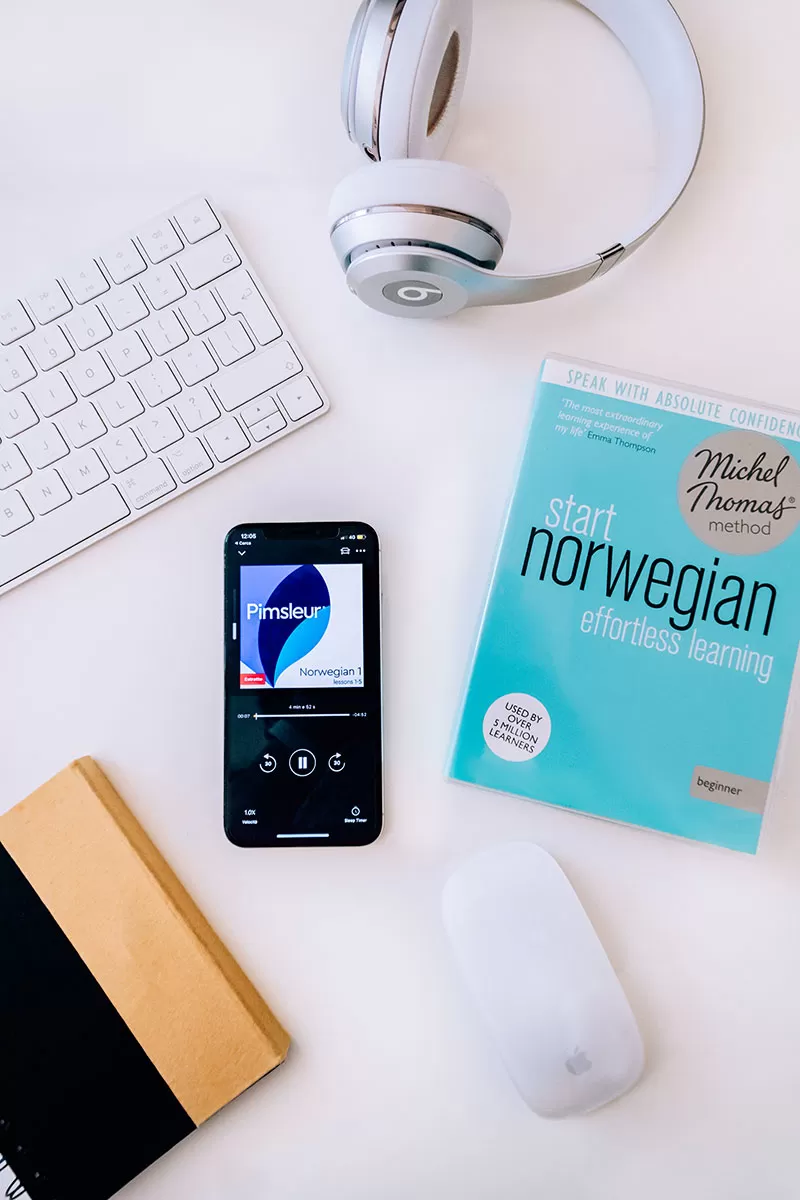 Just as important as reading, is dedicating time to listening comprehension. There are a variety of ways to do this including listening to podcasts, following an audio course, or listening to audiobooks.
Just as important as reading, is dedicating time to listening comprehension. There are a variety of ways to do this including listening to podcasts, following an audio course, or listening to audiobooks.
Podcasts
When it comes to choosing the right podcast, pick something that’s targeted to language learners. For example, Coffee Break Languages is a hugely popular podcast that helps you learn French, Spanish, Italian, German or Chinese with short yet effective lessons through everyday conversations in real-life situations. They also offer courses on the Coffee Break Academy where you can access video materials, lesson notes and bonus audio content.
If you’re a Spotify user, this is another great way to find podcasts. I personally find this easier to use and keep up to date with new episodes.
Audio courses
Two of the most popular audio courses (especially with Polyglots) are Pimsleur and Michel Thomas Method (my personal favourite). What I love about the Michel Thomas Method is that he constantly introduces you to new words and grammar rules while building upon what you already know.
This is an interactive audio course where you’re effectively the third student in Michel’s classroom. He teaches you every new piece of information breaking it down and explaining it in such a way that you don’t need to write anything down because he helps you to remember it. He’s absolutely brilliant!
Michel Thomas Method courses are available in numerous languages starting with his foundation courses for absolute beginners, all the way up to advanced level students.
See all available languages in the Michel Thomas Method series here
Audiobooks
With the rise of Audible, it’s so easy to access foreign language books in their audio format. The Short Stories series even has their own audiobook versions so you can either follow along with the book itself or listen to it while doing housework or relaxing in the sun.
Sign up for Audible here and get 2 free audiobooks
5. Use language learning apps
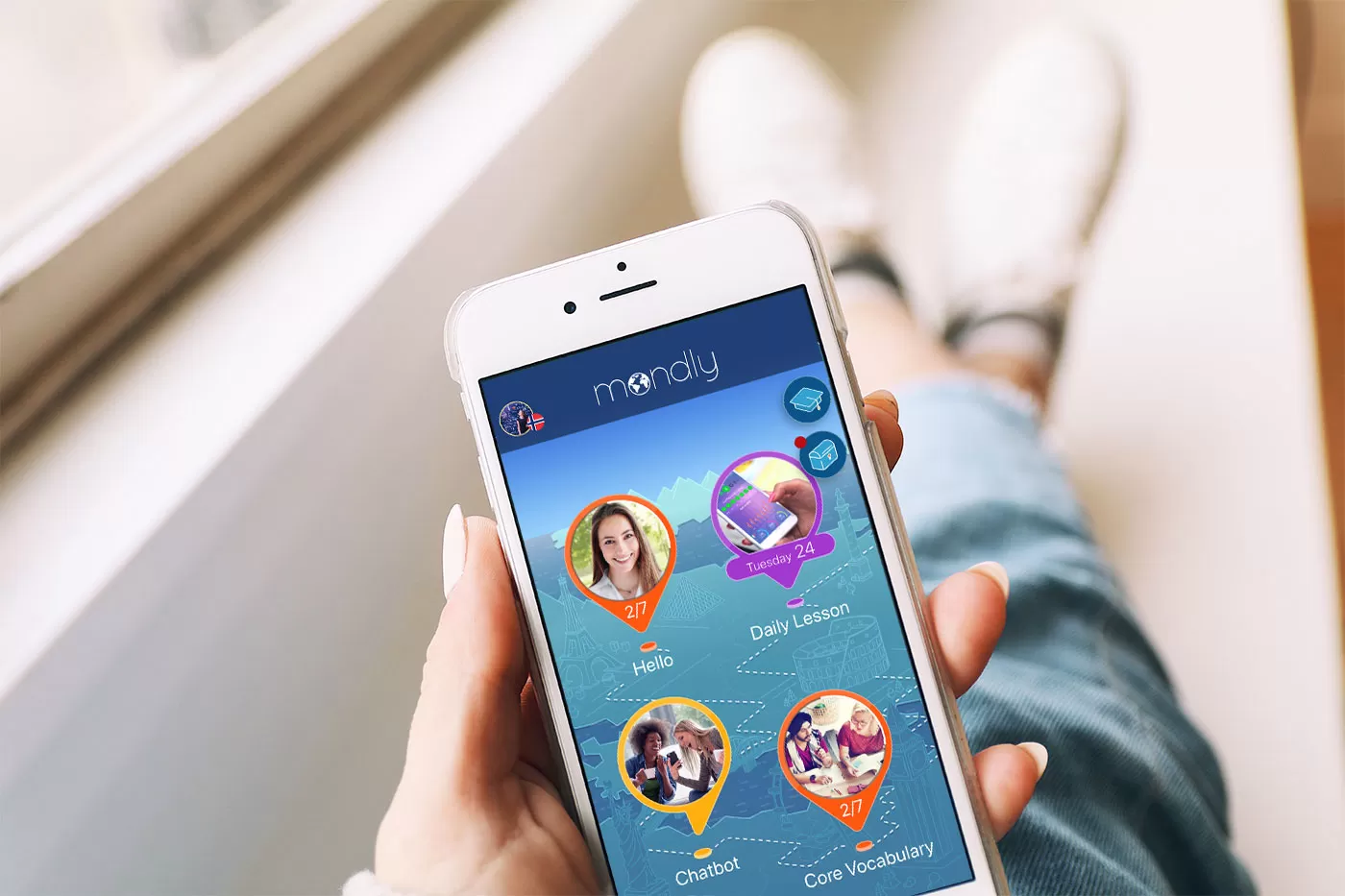 There are so many great language learning apps to choose from. To keep things simple, here are the two apps I use the most. The one I first started using and still love today for learning vocabulary is Mondly. This easy to use app combines a conversation focused curriculum, speech recognition, and short interactive lessons that you can effortlessly slip into your day.
There are so many great language learning apps to choose from. To keep things simple, here are the two apps I use the most. The one I first started using and still love today for learning vocabulary is Mondly. This easy to use app combines a conversation focused curriculum, speech recognition, and short interactive lessons that you can effortlessly slip into your day.
Mondly teaches 41 languages, most of which aren’t available on other language learning apps which is why Mondly is my favourite app of them all and why it has over 50 million downloads! Click here to get 95% off Mondly using my special reader discount and lifetime access for one low price.
Want to practice with a native speaker? HelloTalk allows you to chat with native speakers all around the world by exchanging text and voice messages. The app allows you to add corrections to written messages, so you’ll immediately get feedback on your writing. You can even send voice messages and HelloTalk has an inbuilt dictionary, making the whole process super streamline.
For more language learning apps, check out my favourite language learning apps here.
6. Watch movies, TV series, and the news
 Whether you’re settling in for the evening or want to get in some language study that doesn’t require too much concentration, switch on something to watch. Find something in the genre that interests you the most and turn it on.
Whether you’re settling in for the evening or want to get in some language study that doesn’t require too much concentration, switch on something to watch. Find something in the genre that interests you the most and turn it on.
Bored with the same Netflix suggestions on your home screen? Can’t access the content from your location? Spice up your language learning with a VPN. Using a VPN is the best and only way to unlock and access content around the world and navigate the internet safely as it protects your IP address (ie. your actual location). It’s best practice to always use a VPN anyway, so it’s a great investment to make. I personally use NordVPN which I use on both my laptop and iPhone.
Like watching the news? Search for the main news outlet of that country and see if they offer simplified versions for non-native speakers. When I was studying French, I used to listen to Le Journal en français facile (The Journal in easy French) on RFI. Some networks also have news bulletins with subtitles on their website. For Norwegian, I use NRKs Dagsrevyen (Today’s review), which has short snippets for each news item and subtitle support.
Got a Netflix or DisneyPlus account? Don’t feel guilty about your next Netflix and chill session, make it work in your favour. Netflix and DisneyPlus are great for watching foreign-language movies and TV shows with their original audio and subtitles. Here are 44 best movies on Disney Plus for learning languages.
Related: 22 Genius Tips for Language Learning with Netflix [The Only Guide You Need]
Not sure what to watch? Try searching for some of your favourite English-speaking movies and see if they are available with dubbing or subtitles in your target language.
Top tip: Well-known movies (think Oscar nominee) will have more options and might be a good place to start with.
To find out how to unlock this goldmine of language learning resources, visit my guide on how to learn your first foreign language for a step-by-step guide.
That’s it! Which of these are you going to try first? Remember, if you haven’t already done so, find out what type of language learner you are here.
Want to know more about learning languages? Start here!
- 5 Ways to Spice Up How You Learn a Language With a VPN
- How long does it REALLY take to learn a language? [A Practical Guide]
- How to Learn Languages Like Crazy, Even If You Have a Crazy Life [3-Step Method]
- 18 Unexpected Advantages & Health Benefits of Learning A Foreign Language
- How to Get Fluent: 9 Reasons You’re Not Fluent…YET! [& What To Do Instead]
- What Type of Language Learner Are You? Your 4-Step Personalised Learning Plan
- 44 Best Movies on Disney Plus for Learning Languages
- Memrise vs Duolingo: Which Language App is Best For You?
- Mondly Review: 10 Ways Mondly Drastically Improved My Language Learning
- 203 Most Beautiful Untranslatable Words [The Ultimate List: A-Z]
- 10 Proven Memory Hacks: How to Remember New Vocabulary Faster
- 22 Top Language Learning Resources You Should Use
- 13 Ways to Seamlessly Integrate Language Learning into Your Daily Life
- 10 Pro Tips: How to Learn a Language with a Full-Time Job
- 7 Reasons Why You Should Go on a Language Holiday
- Essential Travel Phrases: How to be Travel Fluent in 10 Simple Steps
- 23 Cool Gift for Language Learners They Will Actually Use and Love
- How to Learn Your First Foreign Language in 8 Simple Steps: A Beginner’s Guide
- 11 Life-Changing Reasons Why You Should Learn a Language
- 42 beautiful Inspirational Quotes for Language Learners
- Language learning tips: 11 Polyglots Reveal The Secrets of Their Success
- Top 10 Best Ways to Learn a Language Better and Faster
- How to Learn Italian Before Your Trip
- How to Master Common Italian Phrases for Travel (Like a Local!)
- 78 FREE Dictionaries to Learn a Language Fast [Free eBook Download]
- 22 KEY Travel Phrases That Will Transform Your Travels [Free Guide]
Like it? Pin for later!
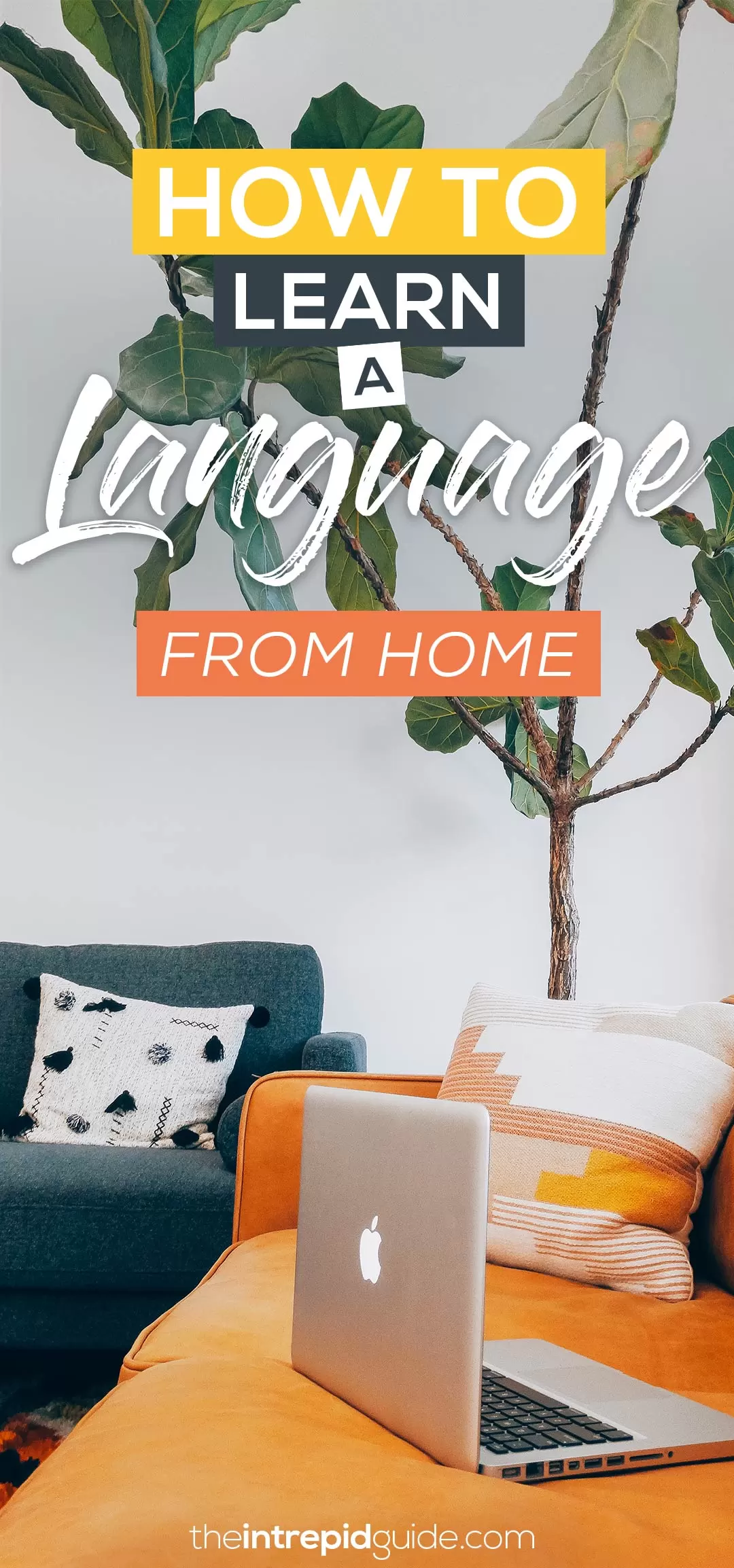
Over to you!
Do you have a question about language learning? Ask me below!
Let me know using the comments section below or join me on social media to start a conversation.
Thanks for reading and I hope you enjoyed this post.
Like what you see? Subscribe using the form below to have all of my posts delivered directly to your email.


3 comments
Basically, this is how I learn languages even without social distancing. Lol
Of course, it’s much harder without a teacher, but I don’t always have the financial opportunity to work with a tutor. So I use all the free resources I can.
I also really like iTalki, it’s a great application for communicating with native-speaking teachers. But I don’t use it too often.
I ADORE italki :) What languages are you learning?
English (since it is not my native one) and German :)